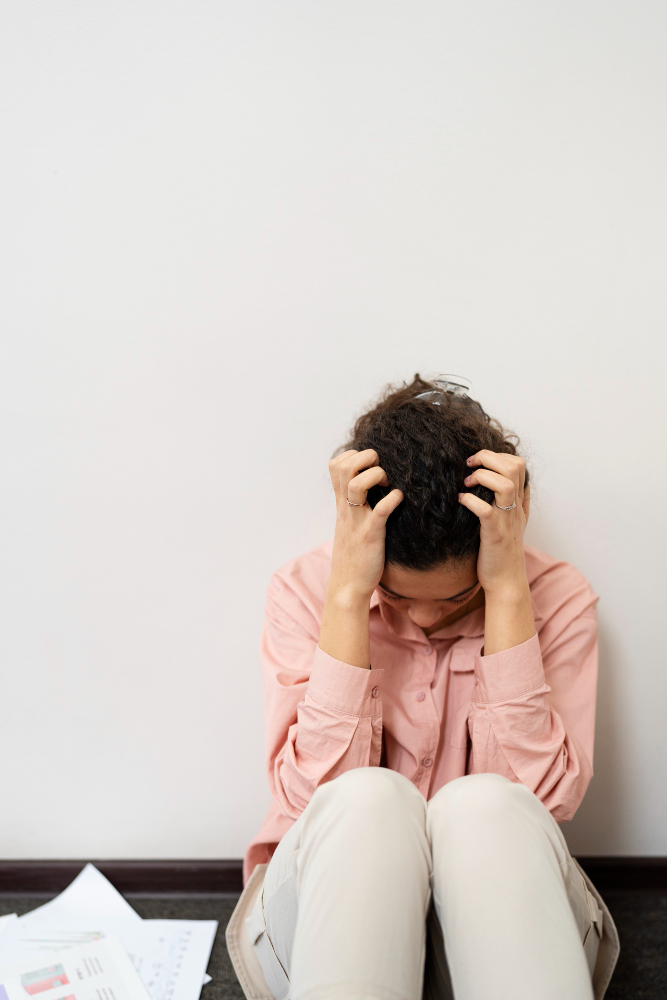
Ayurvedic Treatment for Psychological Disorders
According to Ayurveda, mental illnesses are frequently caused by an imbalance in the three Gunas of the mind (Sattva, Rajas, and Tamas) and the three doshas (Pitta, Kapha, and Vata).
Anxiety, restlessness, fear, insomnia, and nervousness are frequently associated with vata imbalance.
Anger, impatience, violence, mania, and compulsive ideas are all signs of pitta imbalance.
Depression, sluggishness, boredom, excessive sleep, and a lack of drive are all linked to kapha imbalance.
When these mental attributes are out of balance, they might lead to mental anguish. While excess Tamas (inertia, gloom) can result in sluggishness and pessimism, excess Rajas (activity, passion) can create agitation and desire. Sattva (purity, clarity, equilibrium) is the goal of Ayurveda.
Methods of Ayurvedic Therapy for Psychological Illnesses:
Ayurvedic therapy for mental health issues is very customized and usually consists of several strategies:
Psychotherapy and Mind Regulation, or Sattva Avajaya:
This fundamental Ayurvedic psychotherapy technique aims to cultivate positive mental states and restrain the mind from unwholesome thoughts.
It entails guidance, self-control methods, and counseling to control feelings, ideas, and actions.
Spiritual therapy, or Daiva Vyapasraya Chikitsa:
Spiritual practices are incorporated into this method to promote mental and spiritual healing.
It could consist of:
Mantra chanting: Repetition of sacred sounds for mental serenity and concentrate.
Wearing particular herbs or jewels is known as aushadhis (holy herbs).
Pranayama (breathing exercises): Methods to relax the nervous system, lower tension, and enhance mental clarity, such as Bhramari (humming bee breath) and Anulom Vilom (alternate nostril breathing).
Dhyana, or meditation: Consistent practice to develop inner peace, quiet mental chatter, and encourage optimism.
Fostering a sense of faith and surrender to a higher force, or pranidhana, can help ease mental stresses.
Yukti Vyapasraya Chikitsa (Diet and Medicines in Rational Therapy):
Ahara’s diet:
Fresh, light, nourishing, and readily digestible foods like fruits, vegetables, whole grains, nuts, seeds, and dairy are all part of a Sattvic diet, which is strongly advised.
Steer clear of meals that can exacerbate mental imbalances, such as Rajasic (spicy, oily, stimulating) and Tamasic (processed, stale, heavy).
adjusting the diet to the dominant dosha of the individual.
Herbal Treatments (Aushadhi): Ayurveda makes use of a variety of herbs that are renowned for their ability to soothe, balance, and revitalize. Several notable instances are as follows:
Withania somnifera, or ashwagandha, is an adaptogen that lowers cortisol levels, encourages relaxation, and helps the body handle stress. beneficial for weariness, tension, and worry.
Brahmi (Bacopa monnieri): renowned for improving memory, mental clarity, and cognitive performance while lowering mental exhaustion and anxiety.
Shankhpushpi (Convolvulus pluricaulis): Aids in promoting calm, improving memory, and lowering mental stress.
Jatamansi (Nardostachys jatamansi): Helps with anxiety, sleeplessness, and emotional stability; has calming and grounding properties.
Guduchi (Tinospora cordifolia): A herb that strengthens the immune system, aids in mental and physical detoxification, and lowers stress.
Tulsi (Ocimum sanctum): An adaptogen that supports mental equilibrium and aids in stress management.
Vacha (Acorus calamus): Helps with anxiety and depression by enhancing speech and mental clarity.
Kalyanaka Ghrita: A medicated ghee that is frequently used to treat illnesses like depression and improve mental health.
Saraswatarishta: A herbal remedy that enhances mental stability, concentration, and memory.
Panchakarma (Medications for Detoxification and Rejuvenation):
The five purifying techniques known as panchakarma are intended to rid the body of toxins (ama) and restore doshic balance, both of which are beneficial to mental health.
Shirodhara: A very calming treatment in which the forehead (also known as the “third eye”) is continuously covered with warm medicinal oil. It promotes mental clarity, eases tension, anxiety, and insomnia, and relaxes the nervous system.
Warm herbal oils applied to the entire body during an abhyanga (oil massage) strengthen the nervous system, encourage relaxation, increase circulation, and balance the doshas, especially Vata.
Nasya: Using the nasal passages to administer medicinal oils or herbal powders. Since the nasal tube is thought to be a gateway to the brain, it is thought to promote mental clarity, alleviate stress, and eliminate mental fog.
Induced vomiting to get rid of excess Kapha toxins is known as vamana (therapeutic emesis), and it’s frequently helpful for depression and sluggishness.
Purgation, or Virechana, is a therapeutic method for getting rid of excess Pitta toxins and is beneficial for mania, irritability, and anger.
Medicated oils or decoctions are administered rectally as basti (herbal enema), mainly to balance the Vata dosha, which is frequently linked to neurological and anxiety disorders.
Crucial Points to Remember:
Customized Care: Ayurvedic treatment regimens are always made to fit each patient’s particular constitution (Prakriti), present imbalances (Vikriti), and type of psychiatric illness.
Integrated Approach: Ayurveda is used in conjunction with traditional treatment in an integrated approach, which is advised by many medical professionals. While conventional medicine provides quick relief in acute cases or emergencies, Ayurveda can offer long-term healing and sustained wellness.
Qualified Practitioner: For diagnosis and treatment, it is essential to consult an Ayurvedic doctor with training and expertise. Herbal self-medication might be dangerous.
Patience and Consistency: For best effects, ayurvedic treatments frequently call for patience and constant commitment to the suggested food, way of life, and therapies.
Treatments includes
shirodhara, Virechanam, vasti, shiroabhyanga, trataka, Nasyam, karna purana, yoga nidra, yogasana, etc.